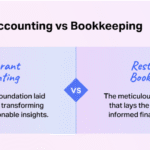Artificial Intelligence (AI) has seen remarkable advancements over the past decade, with capabilities expanding from simple rule-based systems to complex machine learning models that can understand, generate, and interact with human language. One notable technique gaining prominence is Retrieval-Augmented Generation (RAG). This method leverages the strengths of both retrieval-based and generation-based models to enhance the AI’s ability to provide accurate, contextually relevant, and up-to-date information.
Understanding Retrieval-Augmented Generation
Retrieval-Augmented Generation is a hybrid approach that combines two distinct methodologies in AI:
- Retrieval-Based Models: These models access and retrieve relevant pieces of information from a large corpus or database. They are adept at pinpointing existing knowledge, making them reliable for providing factually correct and precise data.
- Generation-Based Models: These models, often powered by large language models (LLMs) like GPT-4, generate text based on learned patterns from the data they were trained on. They excel in creating coherent, contextually rich, and human-like responses.
RAG synergizes these models by first retrieving relevant documents or pieces of information from a vast dataset and then using this retrieved information to generate more accurate and contextually appropriate responses. This process ensures that the AI can leverage both the expansive knowledge base of retrieval models and the natural language capabilities of generation models.
The Mechanics of Retrieval-Augmented Generation
The RAG framework typically involves the following steps:
- Query Input: A user’s query is processed to identify key terms and context.
- Retrieval Phase: The system searches a large corpus to retrieve documents or data snippets relevant to the query.
- Generation Phase: The retrieved information is fed into a generative model, which synthesizes a response that is coherent, contextually enriched, and tailored to the user’s query.
This dual approach allows RAG to address the limitations of purely generative models, such as the tendency to produce plausible but incorrect information, and the constraints of retrieval-based models, which may struggle to create nuanced, contextually integrated responses.
The RAG Tool
The RAG tool, developed by researchers and engineers, is an implementation of the Retrieval-Augmented Generation framework. It allows developers to build AI systems that can dynamically retrieve and integrate external information into the generation process. The tool typically involves three main components:
- Retriever: This component searches a large corpus or database to find relevant documents or pieces of information based on the input query.
- Reader/Generator: This component processes the retrieved information and generates a coherent and contextually appropriate response.
- Integrator: This component ensures that the retrieved information is seamlessly integrated into the generated response, maintaining coherence and relevance.
The RAG tool is highly customizable, allowing developers to fine-tune the retrieval and generation processes according to the specific needs of their application. This flexibility makes it a powerful tool for developing AI systems that require real-time knowledge integration.
Challenges and Considerations
While RAG offers significant advantages, it also presents challenges:
- Computational Complexity: The integration of retrieval and generation processes can be computationally intensive, requiring substantial resources for real-time applications.
- Data Quality and Bias: The effectiveness of RAG depends on the quality of the underlying data. Poor data quality or inherent biases in the training data can lead to inaccurate or biased outputs.
- Scalability: As the amount of data grows, efficiently retrieving and processing relevant information becomes more challenging, necessitating advanced indexing and retrieval techniques.
Future Directions
The future of RAG holds immense potential as advancements continue in AI research. Key areas of focus include:
- Optimizing Efficiency: Developing more efficient algorithms and hardware to reduce the computational load.
- Enhancing Data Quality: Implementing robust data curation and bias mitigation strategies.
- Improving Contextual Understanding: Enhancing the ability of models to understand and incorporate nuanced context from retrieved information.
Conclusion
Retrieval-Augmented Generation represents a significant leap forward in AI knowledge integration. By combining the strengths of retrieval-based and generation-based models, RAG offers a powerful tool for creating AI systems that are more accurate, contextually aware, and capable of providing valuable insights across various domains. As research and development in this field continues to progress, the impact of RAG on technology and society is poised to be profound and far-reaching.












